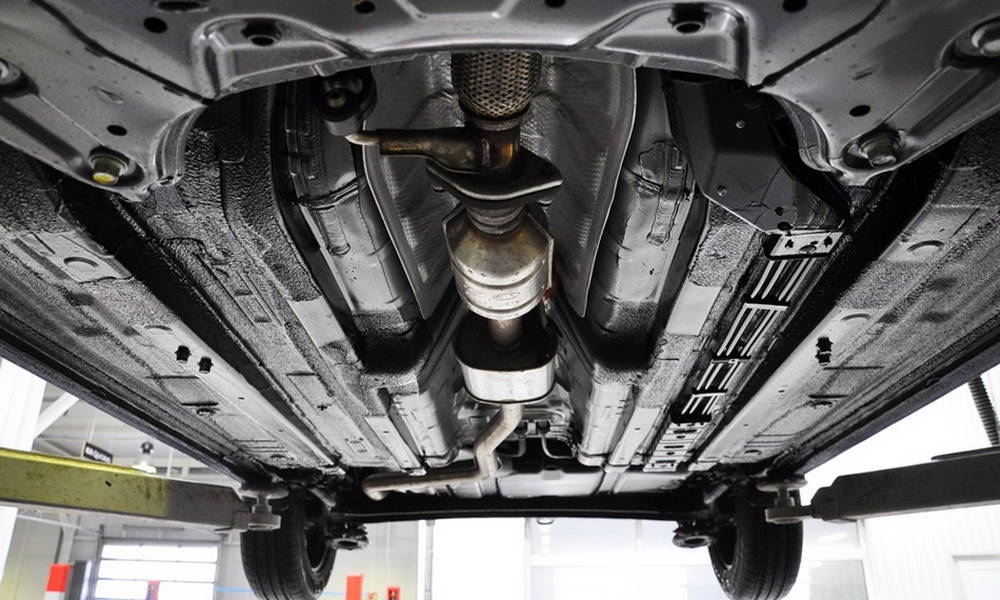
Антикоррозийная обработка автомобиля
Содержание
- Что такое антикоррозийная обработка?
- Зачем делать антикоррозийную обработку автомобиля
- Какова цена антикоррозийной обработки автомобиля
- Какие нужны материалы
- Как сделать своими руками – основные этапы
- Что использовать
- Нужно ли обрабатывать новый автомобиль?
- Как часто нужно обрабатывать автомобиль?
- Как много надо наносить антикора?
- Как узнать, есть ли коррозия на деталях?
- Вопросы и ответы:
Большинство деталей автомобиля изготавливается из металлов. Некоторые из них находятся в масляной среде, благодаря чему они меньше подвергаются воздействию окислительной реакции. Остальные части нуждаются в защите от коррозии. Больше всего в такой защите нуждается кузов машины.
Современные автомобили получают не рамную конструкцию, как внедорожники или грузовики, а несущий кузов, на который сразу закрепляются ключевые агрегаты и механизмы. Снаружи автомобиль покрывается слоем лакокрасочного покрытия, которое защищает металл от агрессивного воздействия влаги. Стоит упомянуть, что не каждому типу кузова может требоваться антикоррозийная обработка. Некоторые корпусы выполнены из устойчивых к коррозии материалов. Подробней о таких кузовах рассказывается в другом обзоре.
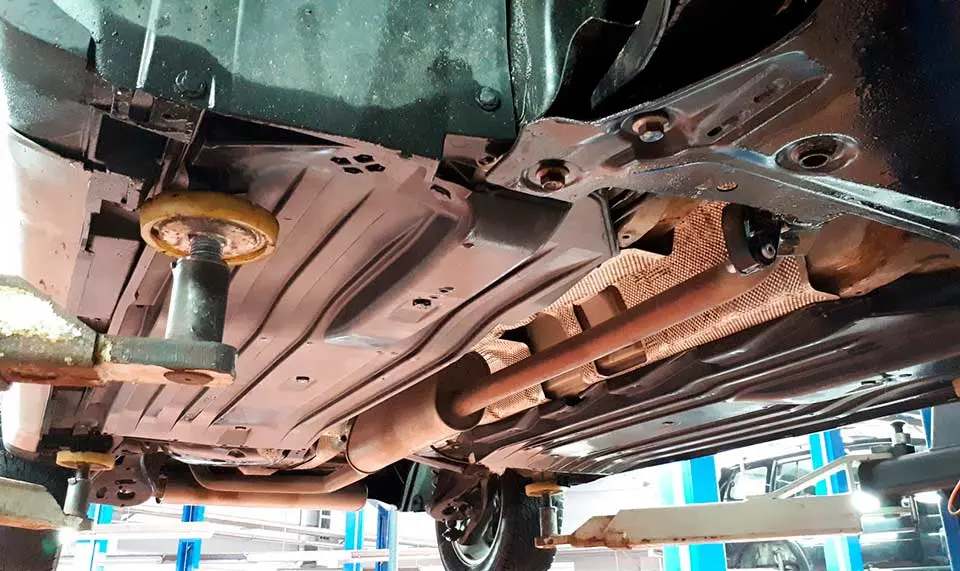
Сейчас поговорим о том, как обработать свое авто, каким антикором лучше покрыть металл, а также как правильно выполнить процедуру.
Что такое антикоррозийная обработка?
Антикоррозия наносится на детали кузова, чтобы защитить их от окислительной реакции, естественной для всех металлических изделий. Только цветные металлы не ржавеют. Перед тем, как нанести слой краски, на металл сначала наносится специальное вещество, которое не дает влаге контактировать с элементами кузова.
Некоторые детали не окрашиваются, поэтому они нуждаются в дополнительной защите. Учитывая это, для каждой части кузова используется свой материал. Помимо устойчивости к воздействию влаги, антикор должен выдерживать некоторое механическое воздействие. Например, о днище часто ударяются камни. На бездорожье автомобиль может зацепиться за кочку и т.д.
Зачем делать антикоррозийную обработку автомобиля
Ржавчина не только портит внешний вид изделий. Со временем металл начинает разрушаться, из-за чего страдает прочность конструкции. При нагрузке поврежденная деталь может сломаться. В процессе эксплуатации на автомобиль оказывается самое разное воздействие, которое может вызвать коррозию кузова.

Вот лишь некоторые факторы:
- Сырая погода;
- Лужи на дороге;
- Снег и грязь, не убранные с трассы;
- Химические реагенты, удаляющие лед с дороги;
- Мелкие камни, вылетающие из-под колес машины.
Чтобы все эти факторы не сократили срок службы кузова авто, каждый автомобилист рано или поздно задумывается, нуждается ли его машина в дополнительной защите.
Какова цена антикоррозийной обработки автомобиля
Стоимость обработки варьируется от 70 до 300 долларов. На это влияют такие факторы:
- Прейскурант фирмы, который определяется ее руководством;
- Стоимостью используемых материалов;
- Сложностью и масштабом работ;
- Нужно ли «латать» кузов перед обработкой;
- Марка машины.
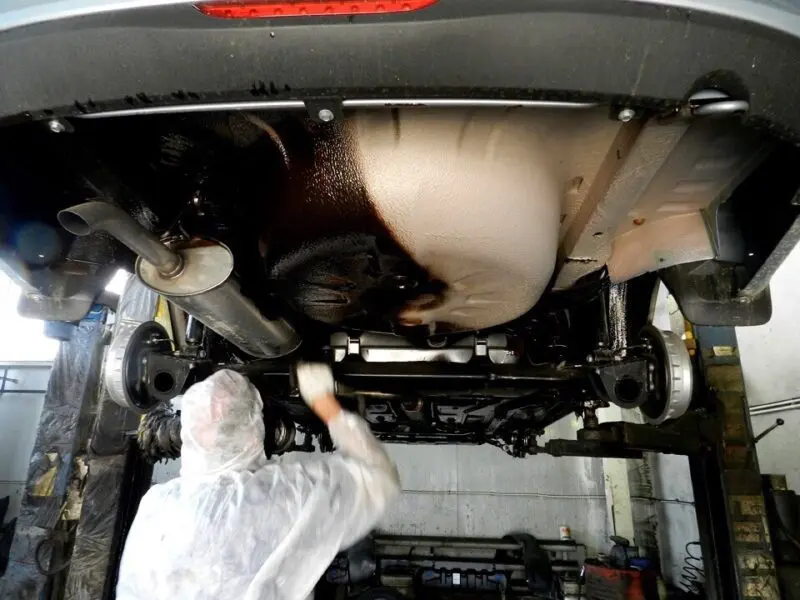
В условиях гаражного СТО работу выполнят дешевле, чем в элитном автосервисе. Правда, в этом случае нужно быть уверенным в добросовестности мастеров. Крупные мастерские устанавливают боле высокую цену, так как у них обробка часто сопровождается дополнительными услугами. Плюс рука мастера намного быстрее и качественней выполнит процедуру, так как ему уже неоднократно приходилось работать с разного рода антикоррозийных материалов.
Какие нужны материалы
Подбирая антикоррозионный состав, нужно останавливать свой выбор не только на бренде. Иногда бюджетный материал не уступает им по качеству. Однако средства известных компаний проходят проверку на простоту в использовании, быстрое выветривание неприятного запаха и экологичность. Причем последний фактор немаловажен не только когда обрабатывается салон авто. В процессе работы с веществом мастер не должен получить отравление.
Что касается наружной части кузова, помимо антикоррозионного покрытия используются грунтовки, краски и лаки. В дополнительной защите нуждаются скрытые полости, а также открытые детали кузова и подвески, которые не покрываются краской. Средство для обработки зависит от того, какая часть машины покрывается.
Для днища автомобиля
Такой материал создает эластичный толстый слой, который не только препятствует контакту влаги с металлом, но и создают небольшую механическую защиту. Они образуют прочную пленку, благодаря которой дно не намокает, когда машина попадает в лужу и не царапается камнями, отлетающими от колес.
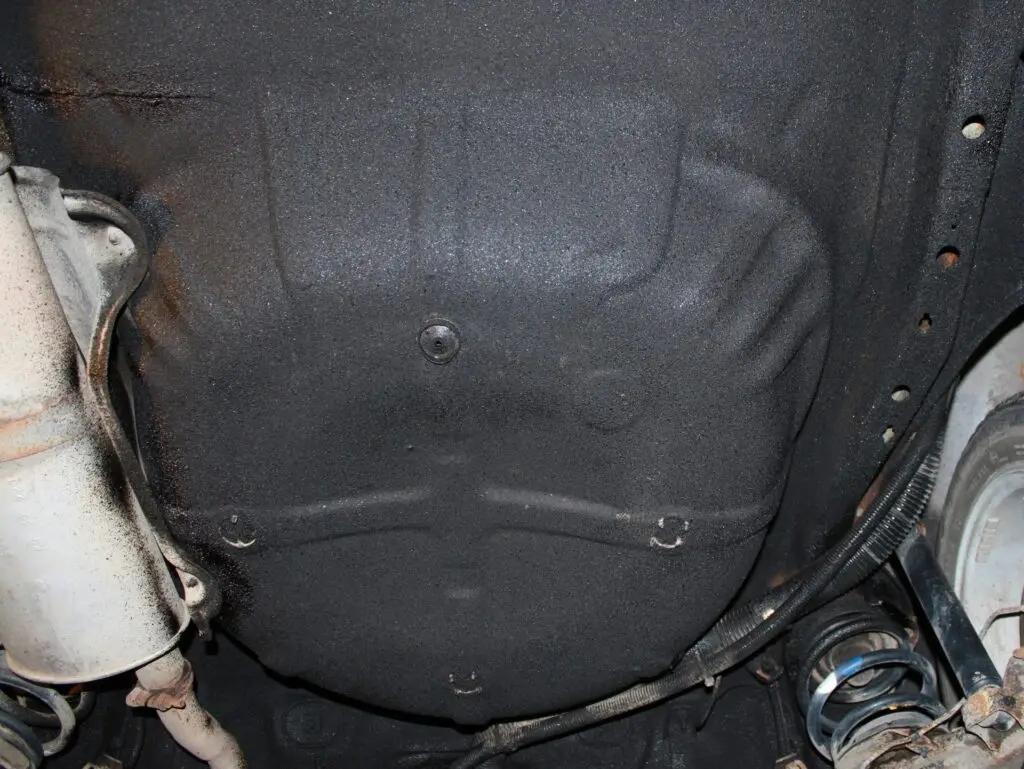
Такое средство состоит из разных ингибиторов, благодаря которым коррозия не так быстро распространяется. Самым доступным для большинства автомобилистов средством является мастика на основе битума. В ее состав может входить резиновая крошка, создающая демпферный слой.
Дополнительный эффект, который создает данное вещество, это шумоизоляционные свойства. Конечно, мастика не заменяет шумовку кузова (об этом есть отдельный обзор). Этот эффект обеспечивается именно благодаря наличию резиновой крошки. Она с небольшим процентом гасит вибрации, поступающие на кузов.
Для арок колес
По составу вещества для обработки этой части кузова почти идентичны предыдущим. Однако в этом случае есть небольшое исключение. Арка гораздо чаще подвергается воздействию влаги, а в дождливую погоду вода попадает на внутреннюю часть все время, пока автомобиль продолжает свое движение.
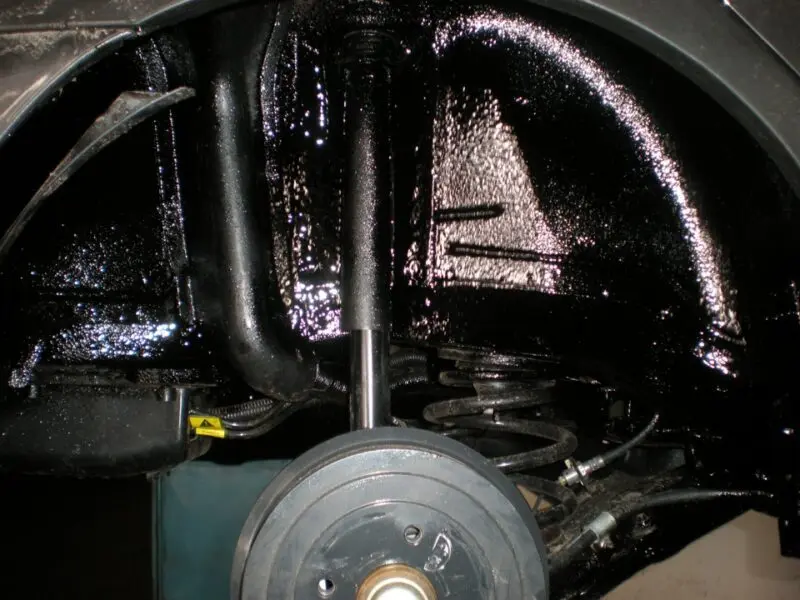
От колес то и дело отлетают мелкие камушки, песок и химические реагенты, которыми посыпаются трассы. По этой причине поверхность нуждается в лучшей защите. Для устранения такого механического воздействия автомобилист может установить подкрылок. Этот пластиковый элемент берет на себя всю механическую нагрузку. Поверхность колесной арки в таком случае можно обработать жидким локером.
Это аналог мастики, только пленка от данного средства более прочная. Некоторые для защиты арок используют мастику. Тогда этот участок следует обработать в два слоя. В домашних условиях и мастику, и локер наносят кисточкой (если сильно густой материал, его необходимо развести в соответствии с инструкцией на таре).
Для скрытых плоскостей
Скрытая полость это объемная часть кузова, которая на заводе редко когда обрабатывается изнутри. В эту категорию входят такие детали, как:
- Порог;
- Дверь;
- Усилитель пола;
- Усилитель крышки багажника и капота;
- Лонжерон и т.д.
Каждый полый элемент в машине имеет технологическое отверстие (в некоторых случаях их несколько). Через него можно залить жидкий состав, благодаря чему защита обеспечивается не только ЛКП снаружи, но и водоотталкивающей пленкой внутри.
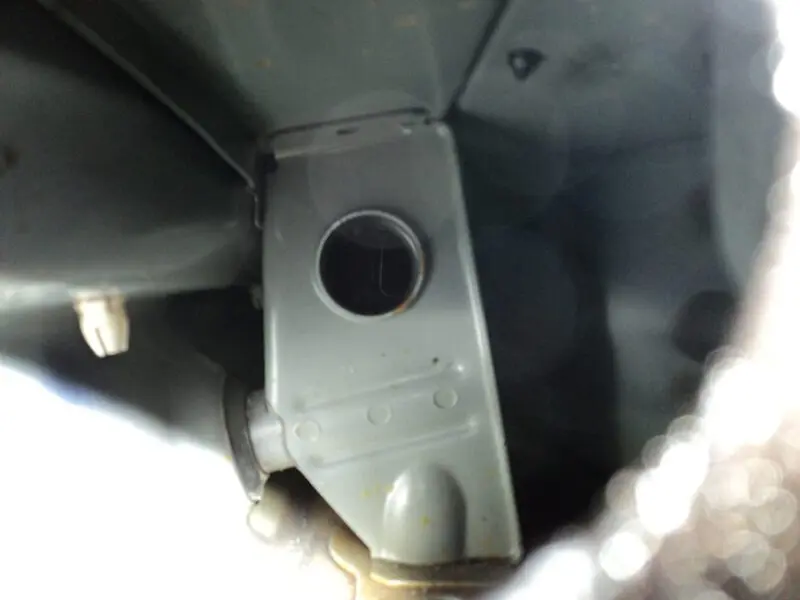
Для такой обработки часто используется мовиль. Его консистенция похожа на масло для мотора. В его состав также входят ингибиторы, предотвращающие распространение коррозии. Особенность материала заключается в том, что покрытие полностью не высыхает, благодаря чему обеспечивается максимальный водоотталкивающий эффект.
Чтобы промовилить пороговый или другой полый элемент, достаточно максимально заполнить полость жидкостью или обильно нанести шприцем с плоским носиком. Часто среди автохимии можно найти антикоррозийные вещества в аэрозолях. Не все средства в такой фасовке обеспечивают качественную защиту, так как часто в их составе находится больше растворителей, чем вещества в сухом остатке.
Как сделать своими руками – основные этапы
Среди многих автосервисов большинство предлагают услугу по антикоррозийной обработке автомобилей. Но ради экономии средств можно выполнить такую работу и самостоятельно. Особых навыков для этого не нужно. Главное – уметь работать с кисточкой и валиком. Выбирая материал, следует быть внимательным к рекомендациям по нанесению, так как некоторые вещества наносятся при помощи краскопульта.
Вот небольшая инструкция, как выполняется процедура в гаражных условиях. Прежде чем приступить к обработке, нужно вывесить авто, снять колеса, а каждый колесный элемент (ступицу с тормозным диском или барабаном) тщательно закрыть. Так битумное вещество не попадет на важные элементы тормозной системы или ходовой части.
Мойка
В первую очередь необходимо удалить всю грязь с обрабатываемой поверхности. Если участок будет плохо очищен, антикор неэффективно зафиксируется, и в процессе езды не будет защищать металл от воздействия влаги.
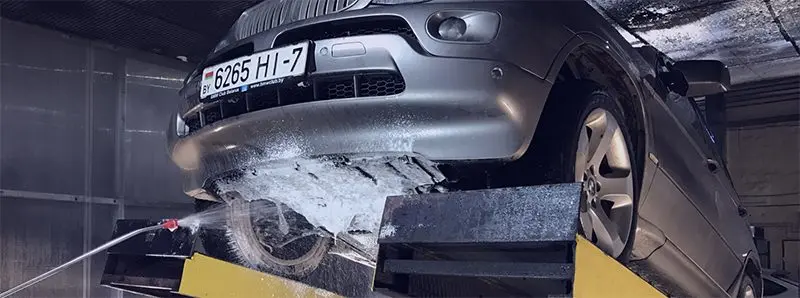
Особенное внимание следует уделить днищу. На нем больше всего застывшей грязи. Для максимальной очистки лучше использовать не просто воду, а мыльный раствор. Дно обильно смачивается, выдерживаем время, чтобы грязь откисла. Затем отмываем поверхность водой. В идеале это лучше сделать минимойкой, которая создает хороший напор воды.
Сушка
После того, как удалена вся грязь с поверхности, ей нужно дать высохнуть. Ни одно вещество с водоотталкивающими свойствами не способно прочно зафиксироваться на мокром изделии. Если процесс ускорить строительным феном, нужно убедиться, что удалена вся влага.
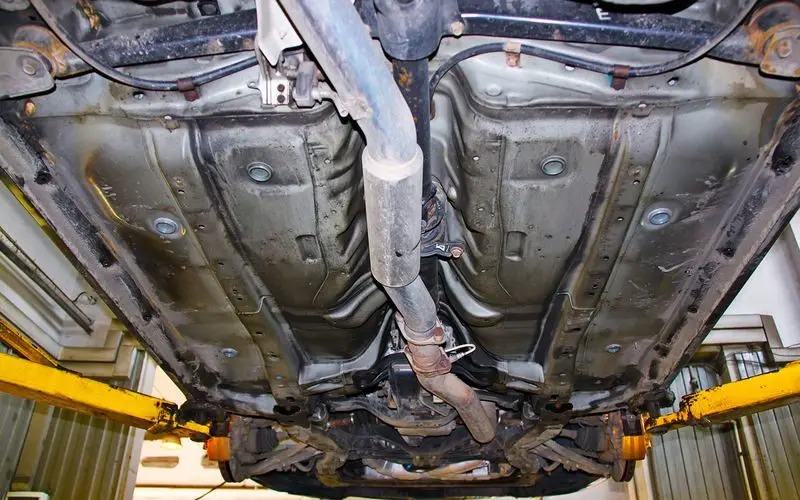
В идеале на всю обрабатываемую поверхность наносится растворитель, который удалит масляные потеки, если такие имеются. При антикоррозийной обработке самое главное правило – поверхность максимально чистая и сухая. Только в этом случае антикор максимально зафиксируется.
Нанесение антикоррозийных материалов
Перед этой процедурой нужно позаботиться о средствах индивидуальной защиты. Так как краскопульт распыляет вещество, оно может попасть на кожу, одежду или в глаза. Также, перед тем как наносить антигравийное средство, необходимо защитить ЛКП от попадания битумной мастики – ее трудно отмыть, не повредив эмаль.
Скрытая полость обрабатывается краскопультом, если он доступен и есть опыт в работе с данным оборудованием. В качестве альтернативы можно воспользоваться аэрозольными средствами. Если нужно обработать крыло изнутри, его снимают.
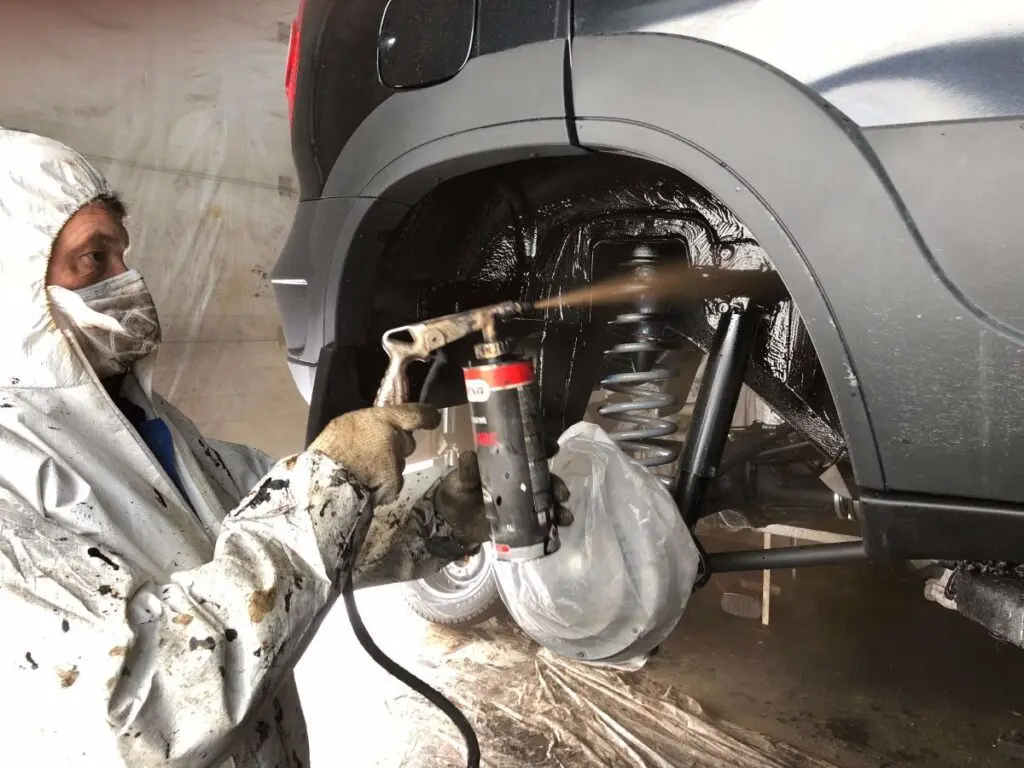
Для нанесения средства на днище, следует воспользоваться кисточкой, а лучше валиком. Максимальная защита обеспечивается, если мастика наносится в несколько слоев (три или четыре). Работа должна проводиться при температуре окружающей среды не ниже +15 градусов. Каждый слой должен просушиваться не менее одного часа. После нанесения автомобиль должен просушиться на протяжении минимум 24 часов.
Что использовать
Для защиты от коррозии могут использоваться такие средства:
- Мастика на основе битума. В основе данного вещества лежит синтетический и битумный смолистый материал. Оно обеспечивает консервирующий эффект, то есть сохраняет металл в первостепенном состоянии, а также защиту от влаги. Учитывая это свойство, перед применением поверхность нужно очистить от коррозии. Так как это самый бюджетный материал, из-за постоянных вибраций он может отслоиться. По этой причине перед нанесением поверхность следует хорошо прогрунтовать.
- ПВХ-материалы с каучуковой основой. Такими средствами в основном пользуются автопроизводители. Материал считается одним из самых долговечных, поэтому он достаточно дорогой.
- Пластик с жидкой консистенцией. Из-за низкой механической устойчивости данный материал используется в качестве дополнительного водоотталкивающего слоя.
- Средства с масляной основой. Их используют для нанесения на неровные поверхности с небольшими трещинами. Также благодаря своей текучести их легко использовать для заполнения полостей.
- Вещества, созданные на основе парафина. Одно из их достоинств в том, что после высыхания они обладают хорошей эластичностью в широком температурном диапазоне, но для обработки днища и колесных арок не подходят, так как имеют низкую устойчивость к механическому воздействию.
Для достойной обработки в домашних условиях можно воспользоваться следующими средствами. Днище обрабатывается каучуковой смесью с резиновой крошкой. На внутреннюю часть колесных арок наносят аэрозольный антигравий. Скрытые полости обрабатываются текучими материалами по типу Мовиль.
Средства, предназначенные для конкретной поверхности, обладают своими свойствами, поэтому стоит выяснить, какому воздействию будет подвергаться защита от коррозии. Например, материал для заполнения полости должен производить на коррозию нейтрализующий эффект. В процессе заполнения он должен быстро фиксироваться на поверхности. В то же время он должен обладать достаточной эластичностью.
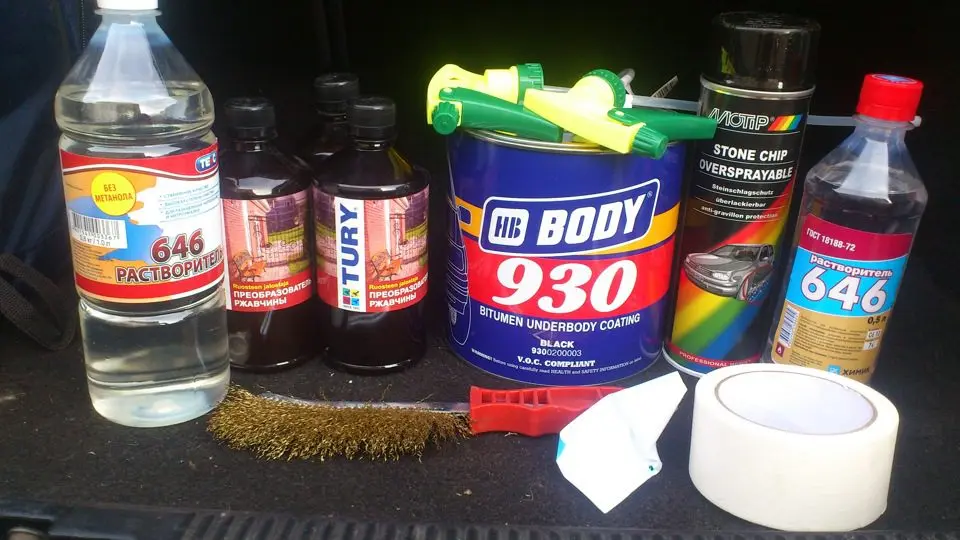
Вещества для днища обязаны не только выдерживать воздействие влаги, но также сохранять эластичность на разных температурных режимах и выдерживать большое механическое воздействие.
Среди автохимии существуют составы, которые созданы для защиты заводского ЛКП от ударов камней о кузов. Эти вещества называются антигравийным покрытием.
Нужно ли обрабатывать новый автомобиль?
Что касается отечественного производства, то многие модели авто страдают от недостатка антикоррозийной обработки (изготовитель может использовать дешевые материалы или наносить их слишком тонким слоем). Зарубежные автомобили получают более качественную защиту от коррозии кузова. Однако, приобретая такую машину, не стоит надеяться, что днище, арки и пороги максимально защищены.
Причина тому – разный климат и условия эксплуатации. Иностранные автопроизводители зачастую используют качественные материалы, но на современных дорогах постсоветского пространства они быстро приходят в негодность. Обычно дилер осведомлен о том, какую обработку прошел автомобиль. Для полной уверенности лучше обработать новый автомобиль.
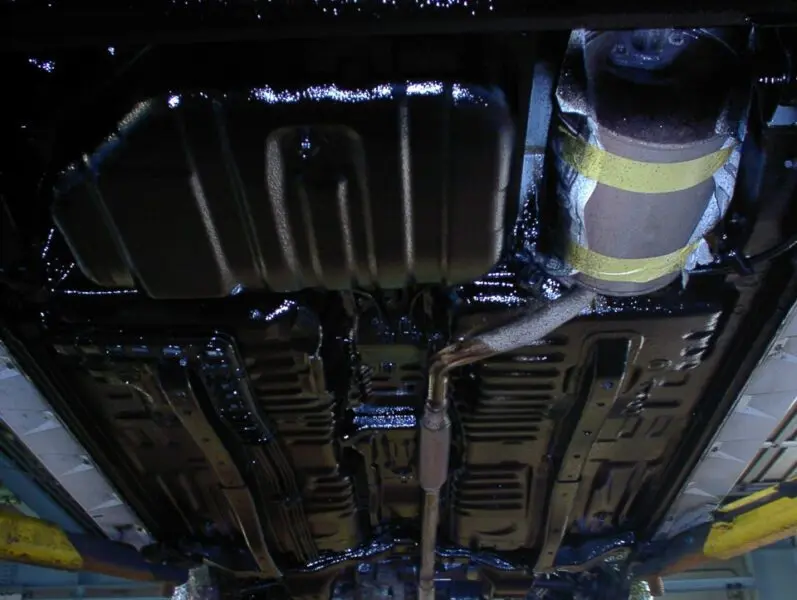
Что касается машин, приобретенных на вторичном рынке, то здесь без подводных камней не обойтись. Некоторые недобросовестные продавцы ради создания товарного вида наносят антикоррозийное покрытие поверх уже испорченного металла. Но в большинстве случаев по состоянию такой защиты можно определить, стоит ли приобретать такую машину.
Как часто нужно обрабатывать автомобиль?
Ошибка многих автолюбителей в том, что они полностью надеются на то, что автопроизводитель использует качественную защиту от ржавчины, поэтому под машину не часто заглядывают. На самом деле многие мастера даже рекомендую периодическую обработку кузова антикором. Лучше это делать перед наступлением сырого сезона (осень-зима).
Если покупается авто из салона, некоторое время о данной обработке можно не думать. Однако защитное покрытие не вечно, и за его состоянием нужно периодически следить. Особенное внимание нужно уделять труднодоступным местам (колесным аркам, закрытыми подкрылками, днищу, порогам, нижней части дверей и т.д.).
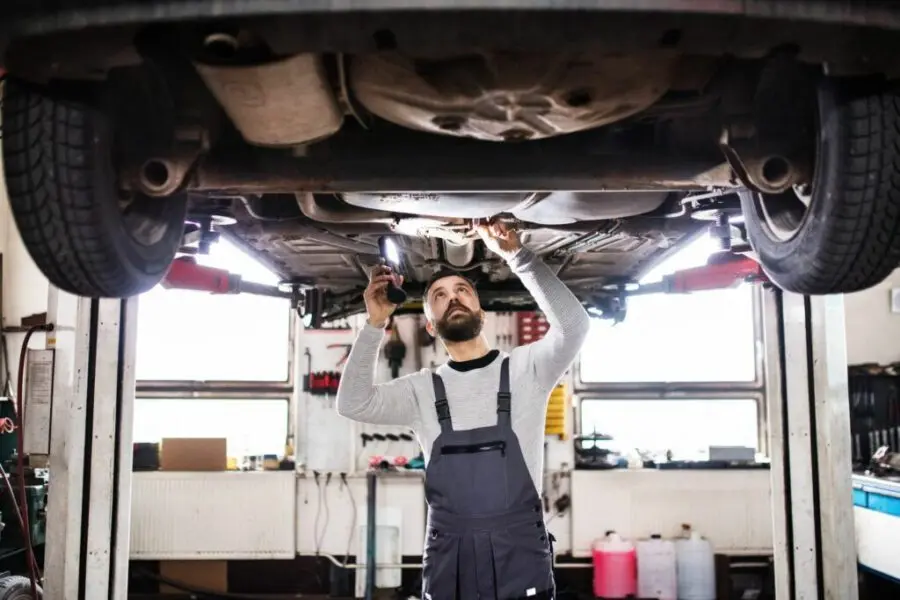
Как показывает практика, в условиях эксплуатации транспортных средств на территории стран СНГ такую обработку следует проводить не реже чем через два года. Перед заполнением пустот их нужно очистить, насколько это возможно в каждом отдельном случае.
Как много надо наносить антикора?
Каждый автомобилист заинтересован в том, чтобы кузов его авто максимально долго сохранял свой первозданный вид. По этой причине экономить на антикоррозийных материалах не стоит. Каждое средство имеет свою структуру и обеспечивает максимальную защиту при нанесении в несколько слоев. Об этом указывается в инструкции по применению, которая напечатана на таре.
Некоторые материалы должны наноситься путем распыления под большим давлением. Для этого используются аэрозоли, но в идеале больше эффекта можно достичь, если воспользоваться краскопультом. Он обеспечит качественную фиксацию вещества на поверхности.
Как узнать, есть ли коррозия на деталях?
Коррозия появляется в результате агрессивного воздействия влаги и воздуха на металлические детали. Это естественный процесс, который невозможно остановить без использования специальных составов. Но ржавчина ржавчине рознь. Подробней о разновидностях коррозии кузова и о способах устранения каждой из них рассказывается в другом обзоре. Стоит учитывать, что каждое повреждение металла имеет свои последствия, поэтому не всегда антикоррозийная обработка должна наноситься поверх такого металла.
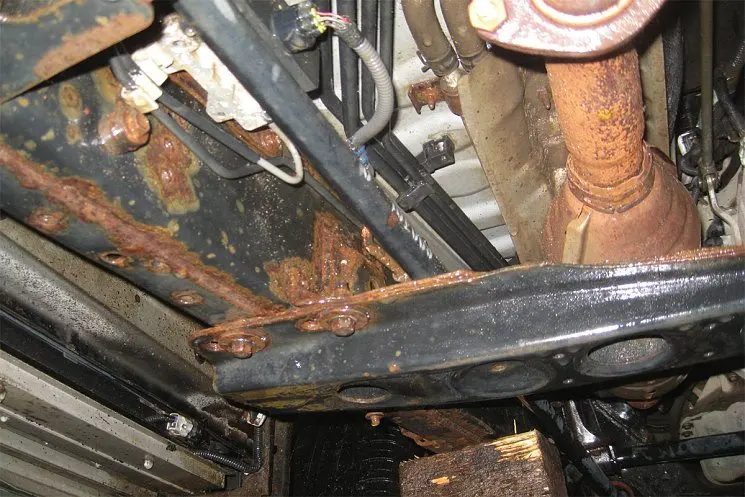
Также следует помнить, что отдельные части машины ржавеют быстрее других, так как сталкиваются с большим воздействием окружающей среды. Больше всего такому разрушению подвергаются сварочные швы, находящиеся в труднодоступных местах (плохо проветриваются), и на которые часто попадает вода.
При резкой смене температуры на некоторых участках кузова могут образовываться микротрещины. Щелевая коррозия также возникает из-за больших вибраций. Это приводит к отслаиванию лакокрасочного покрытия от металла и его растрескиванию. Чаще всего такое происходит тоже на стыках деталей, не усиленных ребрами жесткости. Периодический визуальный осмотр всего автомобиля поможет вовремя выявить повреждение, устранить его и обработать антикором.
Вот небольшое видео о том, как обработать автомобиль антикоррозийным составом:
Вопросы и ответы:
Чем лучше обработать кузов машины на зиму? В зависимости от возможностей автомобилиста можно воспользоваться антикором, битумными смесями, воском, полиролями, антистатическими пастами или антигравийной пленкой.
Чем лучше обработать кузов автомобиля? Если на кузове нет рыжиков, то лакокрасочное покрытие надежно защитит от агрессивного воздействия окружающей среды восковые полироли или аэрозоли.
Чем лучше обработать днище и арки автомобиля? Бюджетный и качественный вариант – разные мастики на основе битума. Эти вещества надежно предотвращают контакт металла с окружающей средой.
